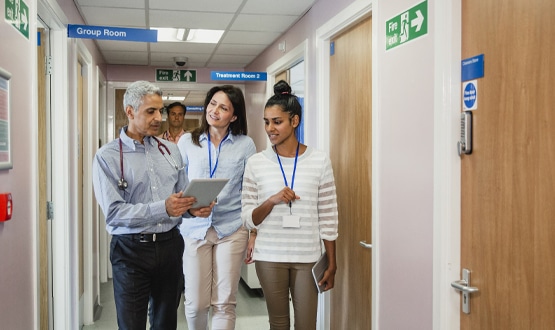Kaiser signs up for Microsoft’s HealthVault
- 10 June 2008
Kaiser Permanente, the largest US nonprofit health maintenance organisation, has announced it will participate in Microsoft’s personal health record initiative linking Kaiser’s existing My Health Manager system to the HealthVault platform.
The partnership, announced Monday, will begin with a pilot project open to Kaiser’s 156,000 employees, which will run until November.
Assuming the pilot is successful the service, linking Kaiser’s patient information with Microsoft’s HealthVault personal health-record service, will then be offered to all of Kaiser’s 8.7m members.
The scale of the initiative would make it one of the most significant moves yet towards the introduction of PHRs.
California-based Kaiser has been a leading adopter of information technology to improve patient care. Use of its web-based My Health Manager personal health record is growing at 100% a year, with 2.25m of its patient members so far using them.
“This is a big step for us, and our first partnership with a consumer health record supplier,” Anna-Lisa Silvestre, Kaiser’s vice president for online services.
“We think we can start to transform the management of chronic diseases,” said Peter Neupert, the vice president in charge of Microsoft’s health group.
Kaiser Permanante was one of 40 new HealthVault-enabled applications announced Monday at a Micrsoft industry event in Seattle introduced to improve patient-doctor data sharing, fitness, wellness and family health management.
Though not a full personal health record (PHR) in its own right HealthVault provides the key tools and services required for third party PHRs. It is intended to provide a secure electronic platform that provides individuals with control of their own health records, as well as responsibility for them.
HealthVault partners now include Allscripts, CapMed, CitiusTech, Eclipsys, HealthUnity, Kryptiq and Vital Data Technology LLC, who are all introducing new health technology solutions that transfer information between a patient’s electronic medical record (EMR) or clinical record and the patient’s HealthVault account.
In addition, a range of personal health applications were announced to allow people to consolidate, store and use personal health information to better manage their own health and the health of family members. Tools also enable users to share some or all of their record with a family doctor or other clinicians.
Further announcements were made on new HealthVault compatible medical monitoring devices. Individuals using HealthVault can now monitor blood pressure, blood glucose levels, peak flow, oxygen saturation of blood, weight, body fat percentage, body mass index, aerobic steps, calories and distance traveled, and share this information with other applications that can use that data to form recommendations for improving care and health.
Both Microsoft and Google have now previously announced collaborative pilot projects with other health providers. Microsoft has announced initiatives with the Mayo Clinic and NewYork-Presbyterian Hospital. Google, has announced initiatives with the Cleveland Clinic and Beth Israel Deaconess Medical Centre.
In a further announcement Microsoft launched new digital-signature functionality in HealthVault to enable verification of whether data sent to a HealthVault account has been altered. The functionality should enable clinicians to have confidence in the integrity of patient data that they are not the source or provider of.




